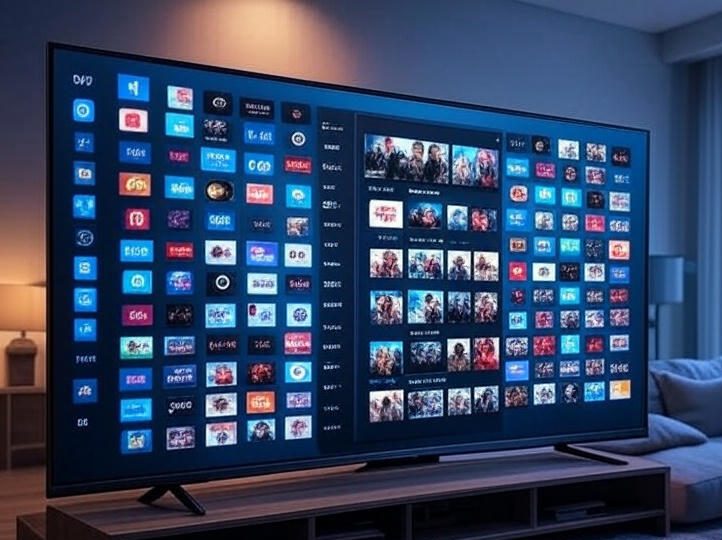
4K streaming requires around four times the data of 1080p HD video. Yet, most internet users don’t have the luxury of unlimited bandwidth or gigabit-speed connections. This is where video codecs step in silently, working behind the scenes to shrink massive files without wrecking image quality. For services like Xtreme HD, maintaining sharp graphics while managing bandwidth is critical for smooth IPTV viewing.
Advancements in video delivery rely heavily on smart compression algorithms. Codecs like H.265 (HEVC) and Google’s VP9 are the unsung heroes of modern streaming. They reduce file size by analyzing patterns in motion, color, and detail, then discarding data viewers wouldn’t notice. Some platforms, such as IPTV UK, use these formats to deliver 4K resolution efficiently, letting users enjoy vivid visuals without constant buffering or excessive data usage.
The Role of H.265 and VP9
Both codecs target high-efficiency delivery. H.265, also known as HEVC, improves upon its predecessor (H.264) by offering up to 50% better compression. VP9, favored by YouTube and Android apps, achieves similar savings through a different approach. While H.265 has wider support on smart TVs and set-top boxes, VP9 often shines on web-based platforms.
Choosing the right codec depends on content type and playback device. For example, H.265 performs better for highly dynamic scenes like sports or action movies. VP9 can be ideal for animation and web streaming. When paired with adaptive bitrate technology, both codecs adjust video quality depending on network speed, keeping playback smooth during slow connections.
How Graphics Blend with Streaming
Computer graphics play a major role in how media appears on screen. User interfaces, overlays, and transitions all rely on GPU processing. IPTV platforms often combine live feeds with graphics-heavy elements like channel logos, program guides, or picture-in-picture views. These visuals add to the total data being transmitted, which means compression has to be smart enough to keep them crisp.
The challenge is preserving detail without ballooning file size. Let’s say a provider overlays a real-time weather widget on a live sports stream. That widget (animated, semi-transparent, and updated every few seconds) adds graphical complexity. Codecs must prioritize moving regions of the screen while maintaining clarity across static areas.
Bandwidth Efficiency vs. Visual Integrity
Stream providers constantly walk a tightrope between speed and sharpness. If a stream is overly compressed, it may look pixelated or lose fine detail. But if compression isn’t aggressive enough, viewers experience lag, stuttering, or long load times. For IPTV operators, striking this balance is key to customer satisfaction.
Some solutions involve layered encoding and pre-rendering. Before the video ever reaches your screen, it passes through multiple processing stages. Textures are flattened, color space is adjusted, and resolution is scaled based on the device. These strategies reduce the processing load on end-user devices and optimize stream quality for mobile, desktop, or smart TV viewing.
Looking Ahead: Smarter Compression Tools
Future codecs like AV1 promise even better compression rates. Already supported by major streaming platforms, AV1 is open-source and royalty-free. It outperforms both H.265 and VP9 in several benchmarks, making it a favorite for next-gen media delivery. Once hardware support becomes more widespread, AV1 may become the standard for 4K IPTV delivery worldwide.
AV1’s ability to deliver crisp visuals at lower bitrates makes it ideal for modern IPTV platforms that rely on real-time rendering advancements to maintain immersive viewing experiences.
Another emerging field is AI-enhanced compression. Machine learning models can analyze scenes and predict which parts of the image matter most to human perception. These systems allow for smarter frame reduction, preserving cinematic elements while minimizing waste. As IPTV providers integrate these technologies, viewers may enjoy even higher resolutions without needing higher-speed internet.
Conclusion
Visual compression doesn’t mean compromising quality. When done right, it brings out the best of both worlds: crystal-clear graphics and efficient delivery. With tools like H.265, VP9, and GPU acceleration, Xtreme HD can offer immersive 4K experiences that work across regions and devices. As new codecs roll out and smart graphics merge with streaming, expect IPTV platforms to keep getting sharper, faster, and more intelligent.